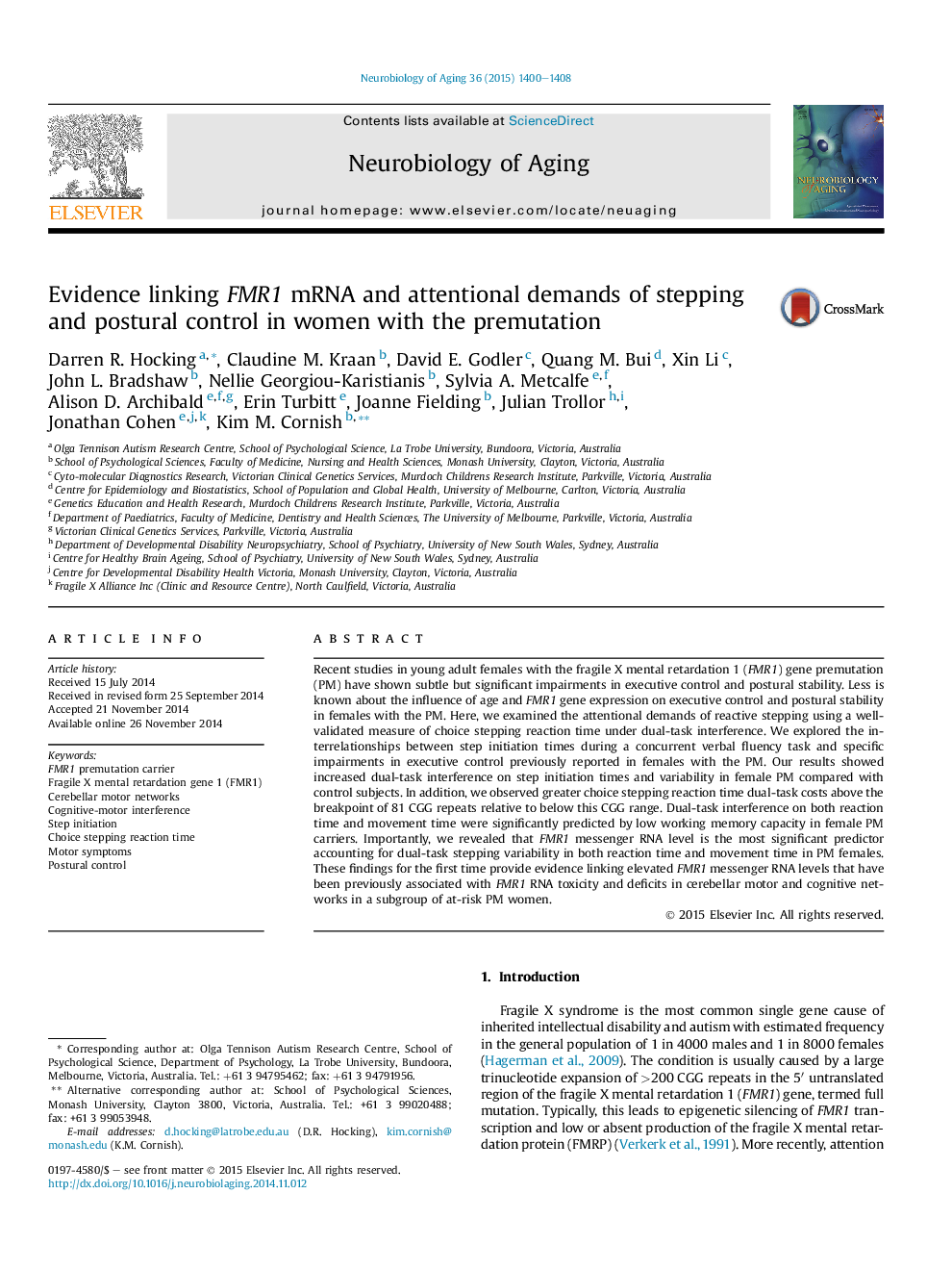| Article ID | Journal | Published Year | Pages | File Type |
|---|---|---|---|---|
| 6804587 | Neurobiology of Aging | 2015 | 9 Pages |
Abstract
Recent studies in young adult females with the fragile X mental retardation 1 (FMR1) gene premutation (PM) have shown subtle but significant impairments in executive control and postural stability. Less is known about the influence of age and FMR1 gene expression on executive control and postural stability in females with the PM. Here, we examined the attentional demands of reactive stepping using a well-validated measure of choice stepping reaction time under dual-task interference. We explored the interrelationships between step initiation times during a concurrent verbal fluency task and specific impairments in executive control previously reported in females with the PM. Our results showed increased dual-task interference on step initiation times and variability in female PM compared with control subjects. In addition, we observed greater choice stepping reaction time dual-task costs above the breakpoint of 81 CGG repeats relative to below this CGG range. Dual-task interference on both reaction time and movement time were significantly predicted by low working memory capacity in female PM carriers. Importantly, we revealed that FMR1 messenger RNA level is the most significant predictor accounting for dual-task stepping variability in both reaction time and movement time in PM females. These findings for the first time provide evidence linking elevated FMR1 messenger RNA levels that have been previously associated with FMR1 RNA toxicity and deficits in cerebellar motor and cognitive networks in a subgroup of at-risk PM women.
Keywords
Related Topics
Life Sciences
Biochemistry, Genetics and Molecular Biology
Ageing
Authors
Darren R. Hocking, Claudine M. Kraan, David E. Godler, Quang M. Bui, Xin Li, John L. Bradshaw, Nellie Georgiou-Karistianis, Sylvia A. Metcalfe, Alison D. Archibald, Erin Turbitt, Joanne Fielding, Julian Trollor, Jonathan Cohen, Kim M. Cornish,
